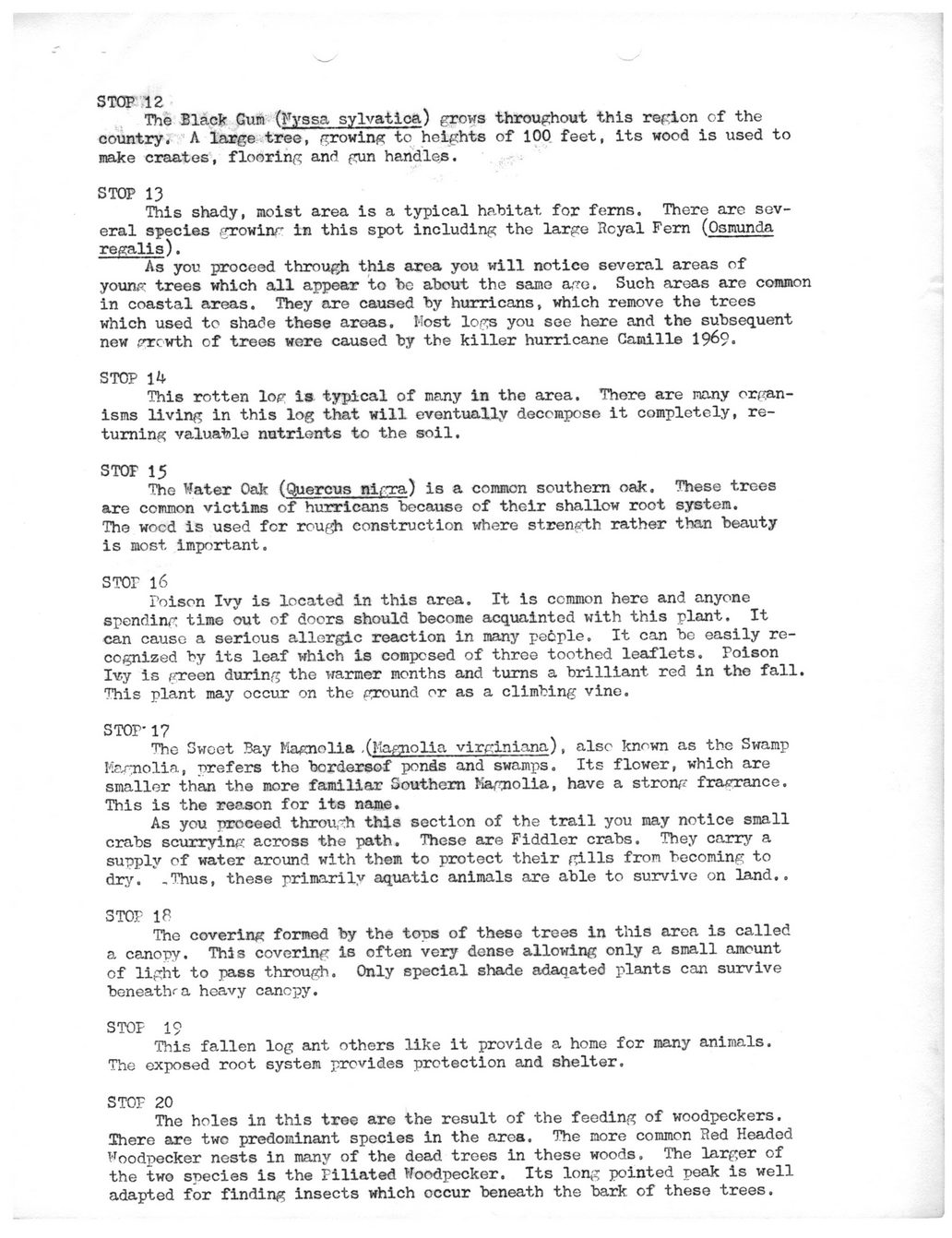This text was obtained via automated optical character recognition.
It has not been edited and may therefore contain several errors.
STOP ,12 The Black Gum (Fyssa sylvatlca) grows throughout this region of the country. A large tree, growing to heights of 100 feet, its wood is used to make craates, flooring and gun handles. STOP 13 This shady, moist area is a typical habitat for ferns. There are several species growinr in this spot including the large Royal Fern (Osmunda regalls). As you proceed through this area you will notice several areas of youn.? trees which all appear to be about the same age. Such areas are common in coastal areas. They are caused by hurricans, which remove the trees which used to shade these areas. Most logs you see here and the subsequent new jrrcwth of trees were caused by the killer hurricane Camille 1969- STOP Ik This rotten lop- is typical of many in the area. There are many organisms living in this log that will eventually decompose it completely, returning valuable nutrients to the soil. STOP 15 The Water Oak (Quercus nigra) is a common southern oak. These trees are common victims of hurricans because of their shallow root system. The wood is used for rough construction where strength rather than beauty is most important. STOP 16 Poison Ivy is located in this area. It is common here and anyone spending time out of doors should become acquainted with this plant. It can cause a serious allergic reaction in many petple. It can be easily recognized by its leaf which is composed of three toothed leaflets. Poison Ivy is green during the warmer months and turns a brilliant red in the fall. This plant may occur on the ground or as a climbing vine. STOP' 17 Tine Sweet Bay Magnolia .(Magnolia virginiana), also known as the Swamp fey-nolia, prefers the bordersof ponds and swamps. Its flower, which are smaller than the more familiar Southern Magnolia, have a strong fragrance. This is the reason for its name. As you proceed through thi3 section of the trail you may notice small crabs scurrying across the path. These are Fiddler crabs. They carry a supply of water around with them to protect their gills from becoming to dry. „Thus, these primarily aquatic animals are able to survive on land.. STOP IP The covering formed by the tops of these trees in this area is called a canopy. This covering is often very dense allowing only a small amount of light to pass through. Only special shade adaqated plants can survive beneathra heavy canopy. STOP 19 This fallen log ant others like it provide a home for many animals. The exposed root system provides protection and shelter. STOP 20 The holes in this tree are the result of the feeding of woodpeckers. There are two predominant species in the area. The more common Red Headed Woodpecker nests in many of the dead trees in these woods. The larger of the two species is the Piliated Woodpecker. Its long pointed peak is well adapted for finding insects which occur beneath the bark of these trees.

Buccaneer Park Old-Hickory-Trail-(3)